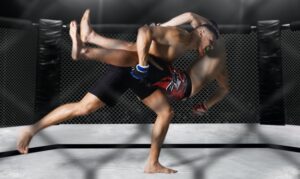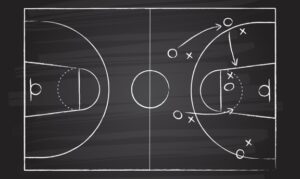Reduced Juice Sportsbooks
Reduced juice sportsbooks are a great option for players looking to lower the house edge and keep more of their bankroll intact. This article explains the concept of a reduced juice sportsbook and give several examples of the differences between traditional bookmakers and the reduced juice ones.
What Is a Reduced Juice Sportsbook?
For decades, virtually all bookies charged the same juice, or vigorish, on straight pointspread bets: -110. This means that if you placed a bet on a spread, you would have to risk $110 for every $100 won. This offered the betting sites a nice edge on all bets placed and helped them pile up massive profits.
With the rise of the internet, a new type of bookmaker has emerged: reduced juice books. These books are much more aggressive than the traditional books, and offer better value to the player. There are actually several types of reduced juice books, with the most common being ones that offer juice lowered from -110 to -105. This cuts the house edge in half and provides better opportunities for the players.
Some books offer reduced juice on certain sports, or only at certain times of day/night. Others offer it continuously and have ditched the standard model of -110/-110 juice. There are pros and cons to each type of book.
Pros and Cons of Reduced Juice Books
From the player’s perspective, all else being equal, you would certainly prefer a reduced juice book to one with the standard -110 juice. However, as in life in general, other things are not always equal.
For example, a book that offers reduced juice is probably less likely to offer generous bonuses, or may have tighter restrictions on bonuses.
A book that offers reduced juice will almost always offer much higher limits than normal, in order to maximize volume. It is similar to a concept used in the retail world: the retailer is willing to accept a lower profit per item, in exchange for more items sold.
Of course, if the profit turns negative, then this would become a disaster and the company would quickly find itself in bankruptcy court.
One of the cons of reduced juice books is that they are much more likely to be sharper with the lines they deal. When a book limits players to $500 per side, it can afford some mistakes and might be a bit slow in moving its lines. When there is a max bet of $25,000 per side, things change considerably.
Line shopping becomes tougher at reduced juice books because of this tendency. It is a trade off for both the player and the book, a tightrope that needs to be carefully navigated in order for either side to consistently profit.

Examples of Lines at Different Types of Books
Let’s take a look at 3 different types of books and some examples of their lines on point spreads and also on moneylines.
Book A is a traditional sports book. They offer fast payouts, medium sized limits, and good customer service. Their lines are dealt using vanilla, -110 style pricing.
Book B is a fairly well established online book that also offers quick payouts, large limits, and decent service. They are a hybrid book that deals mostly -110 lines, but offers reduced juice on Thursdays and also on overnight lines from midnight until 8 am. The limits on these overnight lines are reduced.
Book C is another well known online book that offers some of the highest limits in the world. Their pricing is very aggressive and lines are sometimes rapidly changing, especially before the start of the game. Every line offered by this book is reduced juice, and is never -110/-110. For bigger games and events such as the World Cup, you may see lines as low as -102/-102.
First let’s see what the lines typically would look like at each book on a typical NFL Sunday, 3 hours before the early games kick off. We’ll pick the Denver @ San Diego game as an example.
Book A
| Spread | Moneyline | Total |
|---|---|---|
| Denver -3 (-110) | Denver -180 | Over 44 (-110) |
| San Diego +3 (-110) | San Diego +150 | Under 44 (-110) |
Limits on the spread and moneyline are $1500, and limits on the total are $1000.
Book B
| Spread | Moneyline | Total |
|---|---|---|
| Denver -3 (-110) | Denver -180 | Over 44 (-110) |
| San Diego +3 (-110) | San Diego +160 | Under 44 (-110) |
The limits here are $2500 on spreads and money lines, and $1500 on totals. Notice the moneyline is a better value here than at book A. This line would be considered slightly reduced juice compared to book A.
Book C
| Spread | Moneyline | Total |
|---|---|---|
| Denver -3 (-108) | Denver -173 | Over44 (-104) |
| San Diego +3 (+100) | San Diego +161 | Under 44 (-104) |
The limits here at book C are a staggering $20,000 for sides, $10,000 for moneylines, and $7,500 for totals. Notice that all 3 types of bets here offer the player better value than either of the other two books. Instead of risking $110 to win $100, you risk less across the board. You can also fire a huge bet and not be noticed.
Finally let’s see what the lines look like on a Wednesday morning at 2am. We will use an NBA game here as our example, Boston at Orlando.
Book A
| Spread | Moneyline | Total |
|---|---|---|
| Boston +2.5 (-110) | Boston +115 | Over 190 (-110) |
| Orlando -2.5 (-110) | Orlando -135 | Under 190 (-110) |
Limits are $1,000 for sides and moneylines and $500 for totals.
Book B
| Spread | Moneyline | Total |
|---|---|---|
| Boston +2.5 (-105) | Boston +120 | Over 190 (-105) |
| Orlando -2.5 (-105) | Orlando -130 | Under 190 (-105) |
Limits here are lower than normal for this book but are still $1,500 for sides and moneylines and $1,000 for totals.
Book C
| Spread | Moneyline | Total |
|---|---|---|
| Boston +2.5 (-107) | Boston +119 | Over 189.5 (-114) |
| Orlando -2.5 (-101) | Orlando -129 | Under 189.5 (+106) |
Limits here are $5,000 for sides, $3,000 for moneylines, and $2,000 for totals.
Notice the differences here. Book A is sticking with its traditional pricing and limits. Not much has changed there. But now book B actually offers better value on some bets than book C due to its overnight reduced juice.
However, they have hedged their bets and lowered the limits since not much action is coming in around this time of day anyway. This negates one of the biggest advantages the reduced juice book has, which is the higher than normal volume.
Book C offers a different total than the other 2 books, since it is more aggressive than normal, but the higher juice on the over makes up for this.

Conclusion
There are many variables that differentiate sports books from one another. Reduced juice is one of these variables that should be looked at by the serious bettor.
Whenever you are offered a better price, it is always attractive. But at the same time, these books may offer tougher spreads and worse bonuses. Reduced juice books are counting on extremely high volume and thin margins to make a profit.
It is a good idea to consider the book’s motives before depositing and placing bets there, and always do some research on things like customer service and payouts to make sure you’ll have no trouble cashing in on all your winnings.




